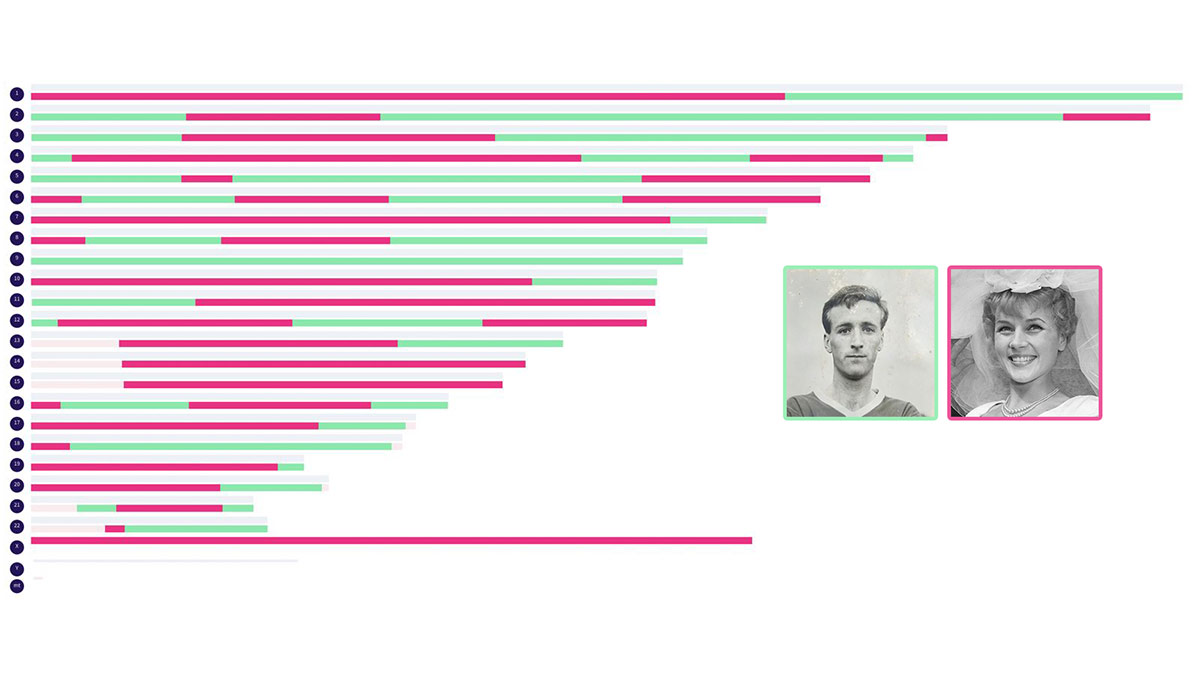Inferred chromosome mapping is a fun, puzzle-like technique that I discussed in this post from 2017. This often involves using a sibling or parent test to infer additional information from DNA matches. In 2020 I launched the inferred segments generator to make this process easier. In the following guest post, Josh Hutchings demonstrates how he has used the tool with grandparent segments.
— Jonny
Few people can DNA test grandparents, and even fewer are able to test great-grandparents. However, in the fortunate situations when this is possible, there is a way of amplifying those results to shed more light on what was inherited from the DNA tested grandparent’s partner.
With the help of the Inferred Segment Generator, at DNA Painter, you can deduce DNA segments from a deceased grandparent using the surviving partner’s results. You can then paint these segments onto your DNA Painter chromosome map allowing you to visualise what was inherited from an untested grandparent.
Key concepts
To better understand inferred mapping, it will help for us to refresh on some of the key concepts relating to the process—namely, chromosomes, DNA, and phasing.
What are chromosomes?
Each person is created following genetic instructions that determine everything about them, from their eye colour to aspects of their character, to the shape and size of their bodies. These instructions are all written down on microscopic scrolls, called chromosomes, which are stored within every single one of the billions of cells in their body. Humans have 46 chromosomes, which all form pairs. The 23 pairs of chromosomes are coiled up and tightly compressed to fit inside each cell’s nucleus. 22 of the 23 pairs of chromosomes are called autosomes, and these are targeted by mass market DNA testing companies for analysis, as it is in the autosomes where there is most genetic diversity among humans. The final 23rd pair are the sex chromosomes, and they do exactly what they say on the tin: determine your biological sex.
What is DNA?
DNA (deoxyribonucleic acid) is the information written down on the little scrolls (the 23 pairs of chromosomes) inside each of your cells. DNA is a language written with chemicals, its simple four-letter alphabet conveying reams of information— words, sentences, paragraphs, and chapters of instructions on how to form you. These lengths of text written in DNA are passed down from parent to child, so you get half from your father and half from your mother. Interestingly, you do not necessarily inherit 25% of your DNA from each of your grandparents. For example, I learnt through inferred mapping that my paternal grandmother makes up around 32% of me, whereas her husband, who passed away long before I was born, makes up just 18%.
When you take an autosomal DNA test (e.g. from 23andMe, AncestryDNA, FamilyTreeDNA, Living DNA or MyHeritage), the companies take your cheek swab or saliva sample and use specialist equipment to decipher the long strands of DNA written onto your 22 pairs of autosomes. In other words, they read the chemical language written on the little scrolls coiled up in your cells.
It is helpful to think of DNA as copied and pasted lengths of text which you inherited from your ancestors, called segments, that can be as short as a few words or as long as an entire chapter. You share lengths of common DNA with your matches, passed down from common ancestors.
What does phasing DNA mean?
As mentioned, you inherit 50% of your DNA from your father and 50% from your mother. However, when you take an autosomal DNA test, it is sometimes not clear whether someone matches you on your maternal or paternal side. Phasing is when you determine which DNA is maternal and which is paternal.
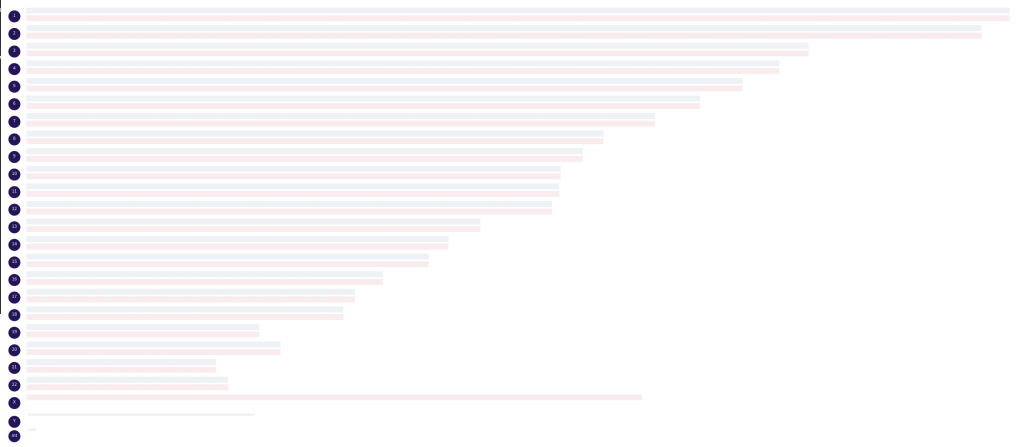
When a match appears at FamilyTreeDNA, Gedmatch, Living DNA or MyHeritage, it will just tell you where on your chromosomes you match, but not necessarily which side of the chromosome pair you match them on. To better understand why this is an issue, I want to explain using a motorway (or highway) analogy.
Imagine your car has broken down on the side of the motorway. You call a tow company to pick you up and you send them your GPS location. However, the tow truck turns up on the wrong side of the motorway!
DNA matches, and their locations on chromosomes, work in the same way. Chromosomes are formed of a pair, just like motorways are often a pair of roads, side by side. Misattributing a DNA match to one side of the road, as opposed to the other, can have major consequences in genealogical research, as it will lead you to match the segments to the wrong parental side.
Therefore, phasing your DNA correctly is vital to inferred mapping.
Practical applications
If an important ancestor (such as a deceased grandparent or great-grandparent) was not able to DNA test, inferred mapping is a brilliant tool for determining (i.e. ‘inferring’) which pieces of your DNA were inherited from them. By analyzing the DNA of known relatives using DNA Painter’s Inferred Segments Generator, you can deduce which segments came from a specific ancestor, when they have not tested themselves.
For example, my Finnish grandmother sadly passed away before DNA testing became commonplace. Unable to test her, I instead turned to her husband, my grandfather. Once I copied and pasted the segments I share with him into the Inferred Segments Generator, it miraculously produced a copy of my deceased Finnish grandmother’s DNA segments to paint onto my chromosome map.
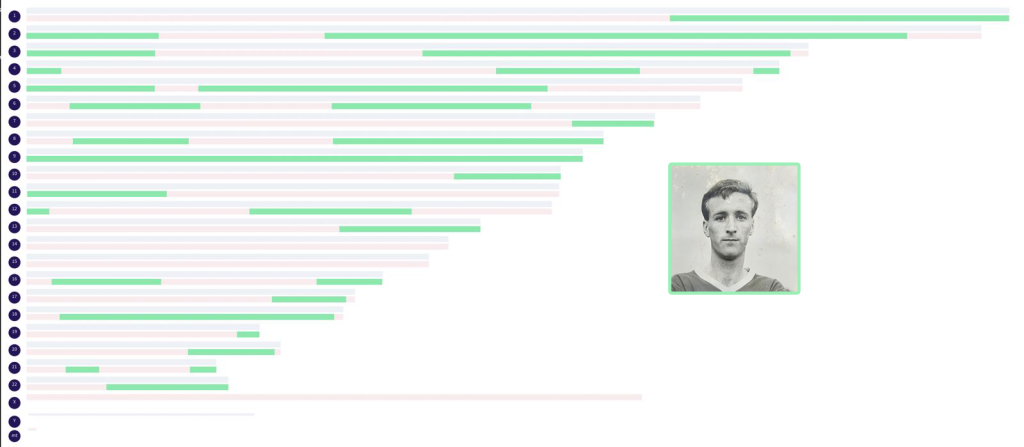
I now can see what I inherited from my Finnish maternal grandmother on my chromosome map without ever actually DNA testing her.
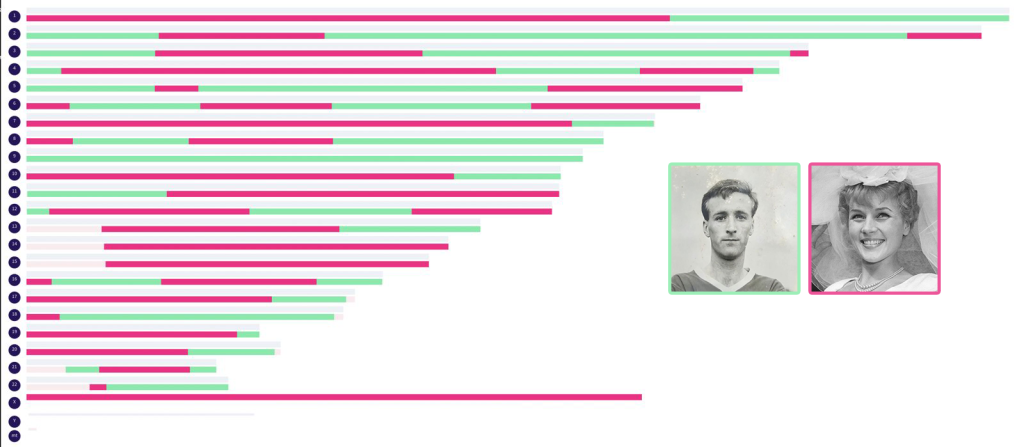
Inferred segment mapping can also help you determine how otherwise unidentifiable DNA matches are connected to you. For example, say a new match in the second cousin range (~200cM) pops up in your DNA match list. They have no picture, a made-up name, and no workable shared matches with you. You download the segments you share with them and add them on your chromosome map as an unidentified match. You may then then notice that the match must connect with you along your grandparental line that you managed to infer segments for.
Using the Inferred segments generator
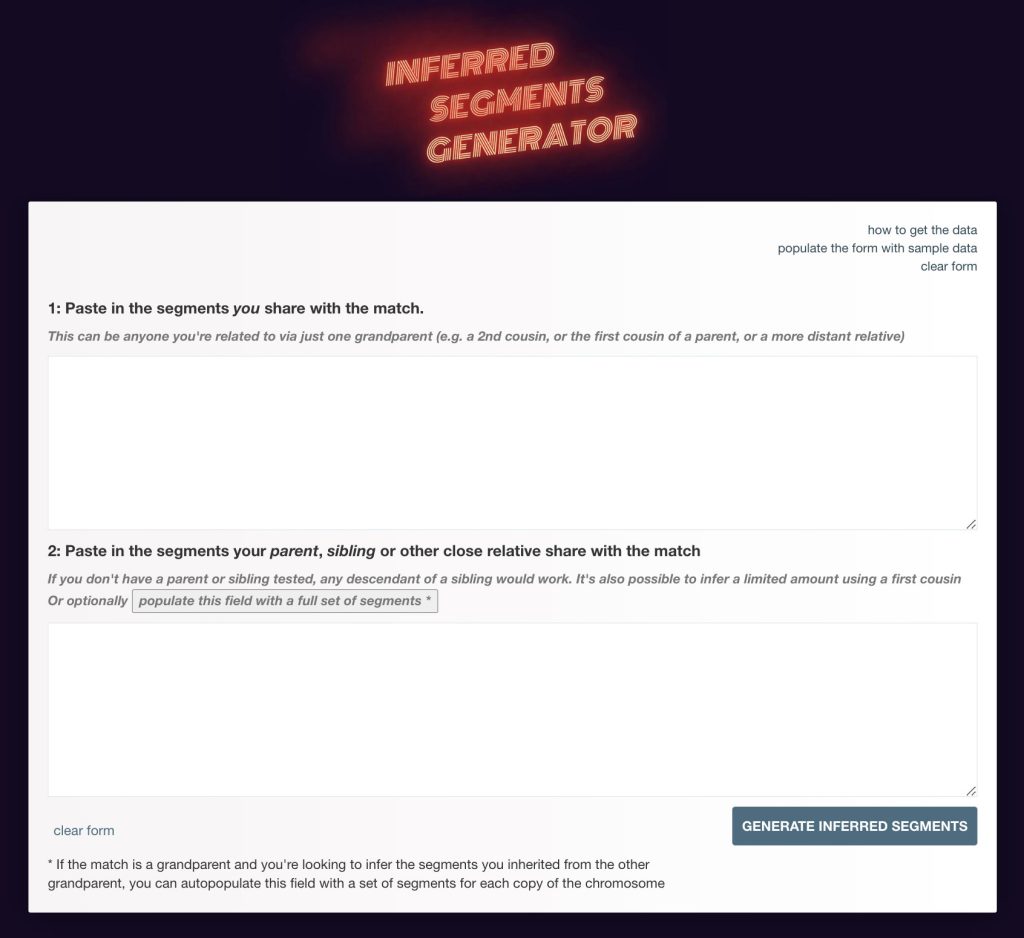
The tool makes inferring segments simple:
- Paste in the segments you share with your tested grandparent
- For a tutorial on how to find those segments, please see Where do you find the segment data?
- Under the heading for the second box, you will see Or optionally populate this field with a full set of segments. Click that button.
- Then, click Generate inferred segments. This will give you the segments you inherited from the partner of your DNA tested grandparent, which you can then paint onto your chromosome map.

How it works
Inferred mapping essentially works by filling the negative space where you don’t match a known relative.
In the example above with my maternal grandparents:
- I am focusing on the segments I inherited from my mother’s parents, so they will be painted onto the pink, lower bars on each chromosome pair, as opposed to the upper blue bars that represent my paternal inheritance
- My maternal grandfather’s segments are already painted, covering some parts of my maternal chromosomes
- I know that I inherited all my maternal DNA from my mother’s parents, so any segments that I didn’t inherit from my grandfather must have come from my maternal grandmother
- Having used the inferred segments generator to generate the coordinates of these segments, I can map them and assign them to my maternal grandmother
- This means I can fully paint my maternal-line inheritance across all my chromosomes, using just one DNA tested maternal grandparent’s results
Limitations and challenges
Inferred mapping is a brilliant tool, especially for those seeking to document what they inherited from their grandparents, though it does have limitations. Some of the more common issues that can arise are:
- Phasing errors, resulting in segments tied to the wrong side of the family
- Small, false matches (<= 10cM) appearing and leading you astray
- If your parents, grandparents, or great-grandparents were related, this will cause phasing issues, as it is difficult to ascertain where exactly a segment originated
- Matches from endogamous communities sharing far more cM than would be expected can also complicate chromosome mapping
It is important to paint your chromosomes carefully when using standard or inferred match data, to ensure you avoid mis-phasing and mis-mapping segments. If you have a parent tested, it would make sense to use a phased kit if possible.
Despite these potential pitfalls, inferred mapping can radically improve your genetic genealogy research, helping to elucidate your DNA match analysis. I hope it helps you as much as it has me!
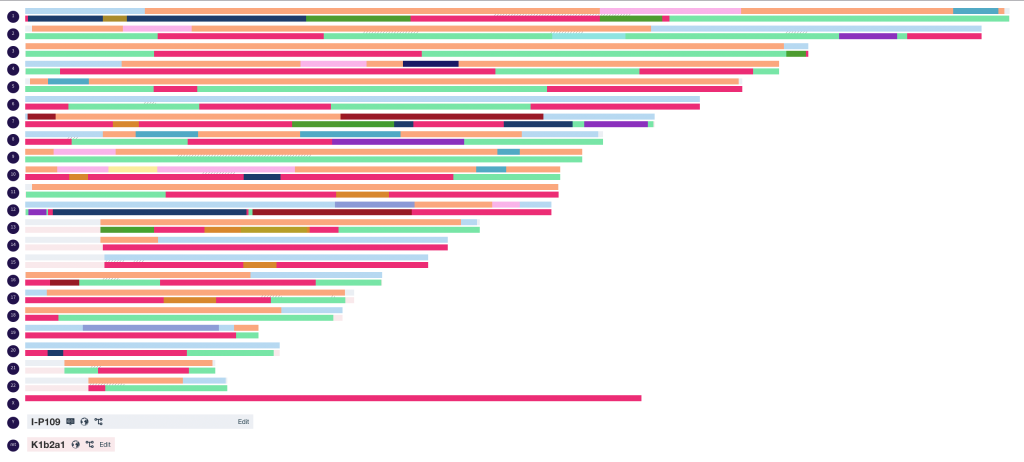
About Josh
Josh Hutchings BA(Hons), MSc is an Anglo-Finnish professional genetic genealogist. Josh has solved several dozen cases of unknown heritage and consulted on many hundreds more. His research interests include social history, ancient DNA, forensic genetic genealogy, and seeking out cases with unusual backgrounds and stories. A keen prosopographer, Josh is awestruck by research emerging from datasets on historical communities.
Further reading
- Jonny Perl: Painting your DNA with inferred matches
- Blaine Bettinger: Deductive chromosome mapping
- Jonny Perl: More tips for inferred chromosome mapping
- Jonny Perl: Interpreting inferred segments: a full aunt
- Tanner Tolman: Reconstructing Grammy’s DNA
- Jonny Perl: A new feature in the inferred segments generator
Contact info: @dnapainter.bsky.social / jonny@dnapainter.com
